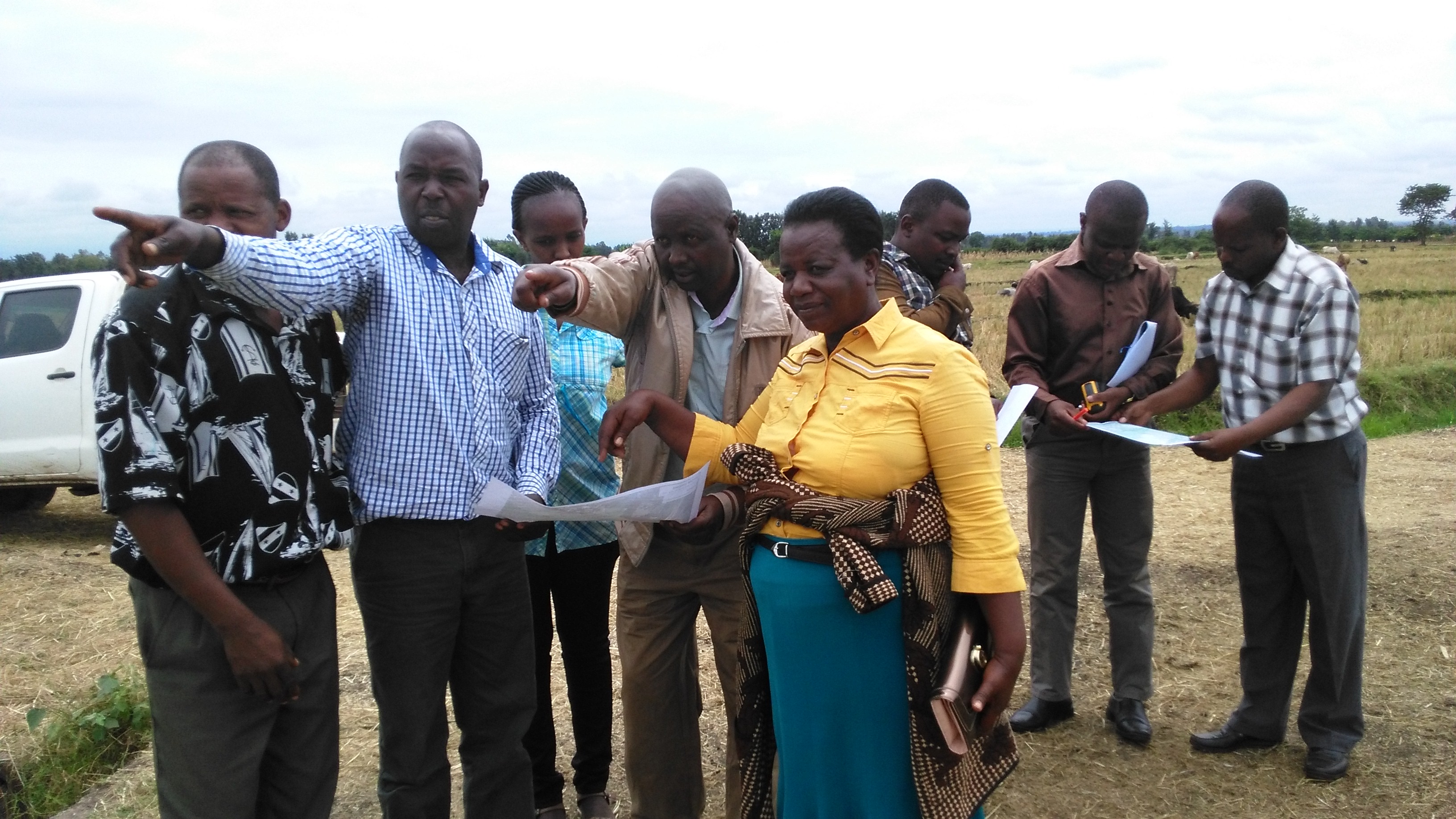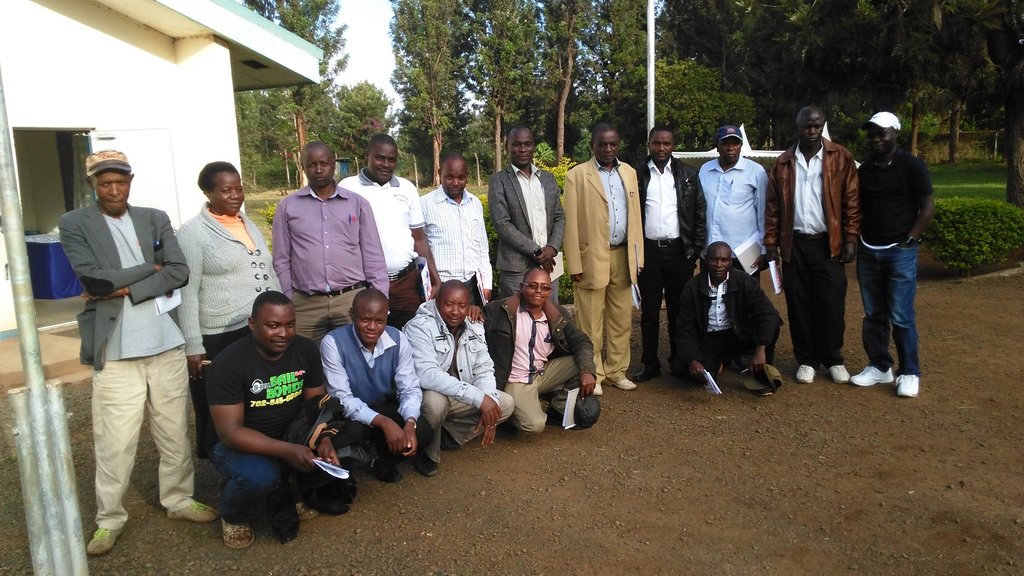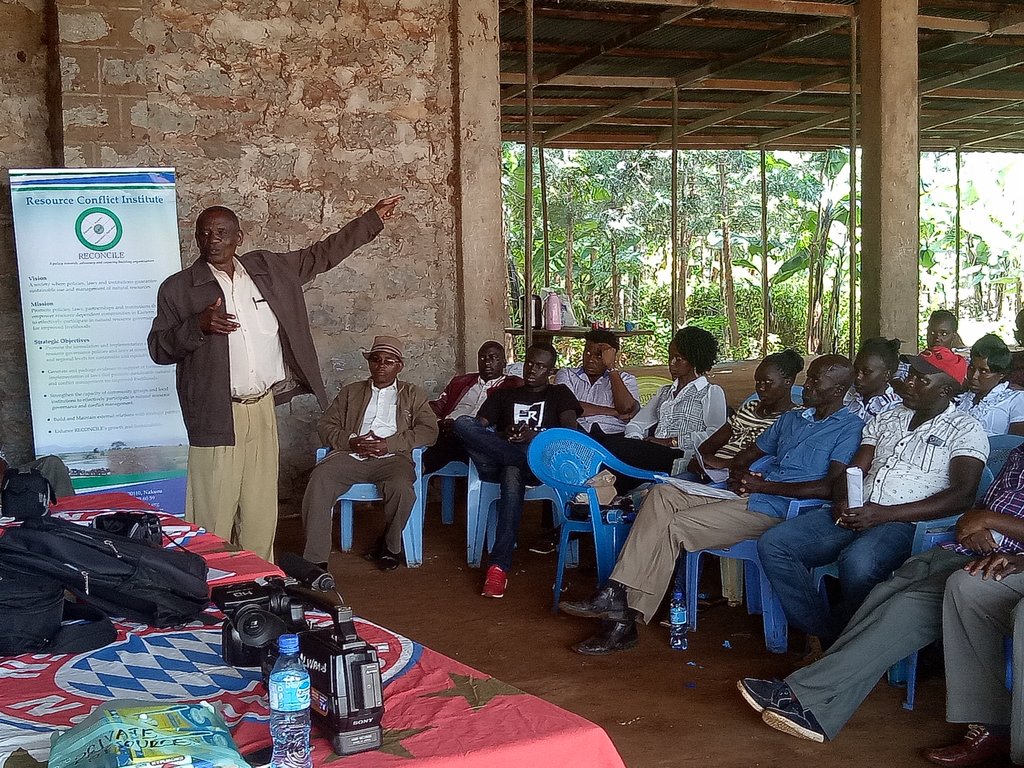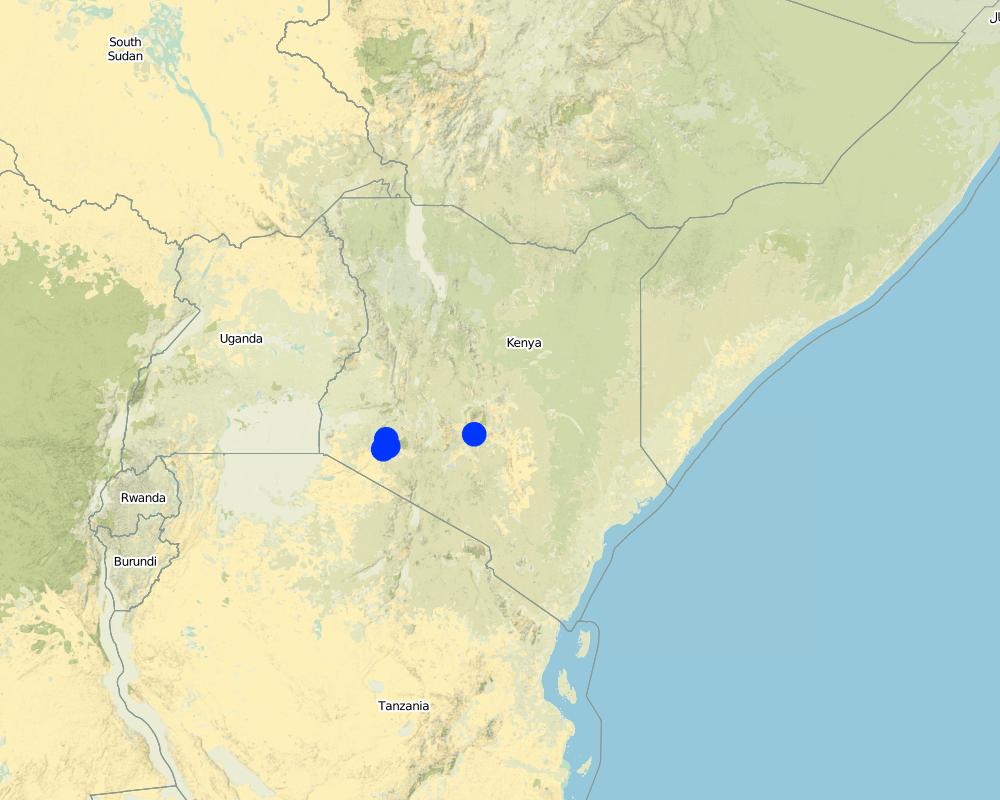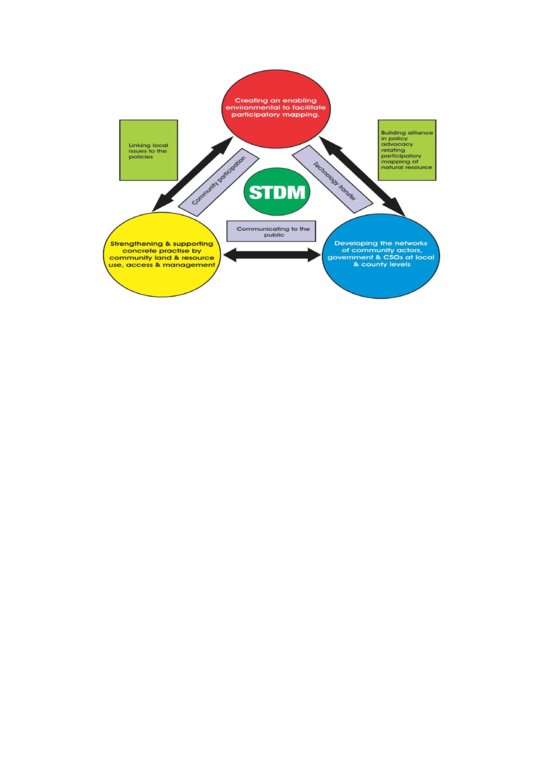Participatory Community Resource Mapping using the Social Tenure Domain Model (STDM) [كينيا]
- تاريخ الإنشاء:
- تحديث:
- جامع المعلومات: Ken Otieno
- المحرر: –
- المراجعون: Rima Mekdaschi Studer, Donia Mühlematter
STDM Project
approaches_3379 - كينيا
- Participatory Community Resource Mapping using Social Tenure Domain Model (STDM): 5 مارس، 2018 (inactive)
- Participatory Community Resource Mapping using the Social Tenure Domain Model (STDM): 19 مايو، 2018 (inactive)
- Participatory Community Resource Mapping using the Social Tenure Domain Model (STDM): 4 يونيو، 2018 (inactive)
- Participatory Community Resource Mapping using the Social Tenure Domain Model (STDM): 3 سبتمبر، 2018 (public)
عرض الأقسام
توسيع الكل طي الكل1. معلومات عامة
1.2 تفاصيل الاتصال بالأشخاص الرئيسيين لمصدر المعلومات والمؤسسات المعنية بتقييم وتوثيق النهج
الشخص (الأشخاص) الرئيسي لمصدر المعلومات
متخصص في الإدارة المستدامة للأراضي:
اسم المشروع الذي سهّل توثيق/تقييم النهج (إذا كان ذلك على صلة)
Book project: Guidelines to Rangeland Management in Sub-Saharan Africa (Rangeland Management)اسم المؤسسة (المؤسسات) التي سهلت توثيق/تقييم النهج (إذا كان ذلك على صلة)
Resource Conflict Institute (RECONCILE) - كينيا1.3 الشروط المتعلقة باستخدام البيانات الموثقة من خلال WOCAT
متى تم تجميع البيانات (ميدانيا)؟:
04/09/2017
يوافق جامع المعلومات والشخص (لاشخاص) الرئيسي لمصدر المعلومات على الشروط المتعلقة باستخدام البيانات الموثقة من خلال WOCAT:
نعم
2. وصف نهج الإدارة المستدامة للأراضي
2.1 وصف موجز للنهج
The Social Tenure Domain Model (STDM) is about people and their relationships with the land. The tool as applied secures tenure through the recognition of tenure diversity and social contexts. STDM recognizes that secure tenure builds confidence among the resource users, and therefore promotes confidence to investment at different levels: small-scale, large-scale, urban and rural investors who all benefits from security of tenure.
2.2 وصف تفصيلي للنهج
وصف تفصيلي للنهج:
The Rangelands Initiative Africa is a programme of the International Land Coalition (ILC) that is working to make rangelands more tenure-secure. The Resource Conflict Institute (RECONCILE) hosts and coordinates the Africa component, while the International Livestock Research Institutre (ILRI) takes global responsibility. It is recognized that the diverse resources and interests of rangelands concern all stakeholders and learning within these groups is important for strategic interventions and responses.
RECONCILE seeks to demonstrate the application of the Social Tenure Domain Model (STDM) in a rural setting, and in this context it has been able to secure social tenure rights for increased production among smallholder farmers. This land management and tenure security programme sought to address the dynamics around common resources in Bomet. Recognizing that there are multiple claims to common resources, the approach focuses on people as the central nexus in land administration. As such, it incorporates an extensive range of systems and processes to manage land through effective and accurate planning and management.
Land - as a factor in production – always attracts interest from various stakeholders. As such, secure access to land, whether through formal, informal, customary or other means, is necessary for rural households to create clarity and security about their rights and to enjoy sustainable livelihoods. In turn this is central to sustainable development. Securing access by rural poor people to land and water rights is key in the reduction of extreme poverty and hunger, since these are crucial assets for poor rural women, youth and men. Kenya has legal, policy and institutional frameworks and governance systems that presents options and opportunities.
The STDM process involves problem identification, stakeholder analysis, training, community enumeration, and data collection. Data includes socio-economic and spatial information. The process allows for a better understanding and testing of the extent that STDM technology responds to gaps and how best it can be applied to cater for the needs of all stakeholders within rural, agricultural, communal land settings. The application of the technology demands complete data sets that are consolidated through a census of both resources users and resources.
2.3 صور عن النهج
2.5 البلد/المنطقة/المواقع التي تم تطبيق النهج فيها
البلد:
كينيا
المنطقة/الولاية/المحافظة:
Bomet county
مزيد من التفاصيل حول الموقع:
Kembu sub-county
التعليقات:
The project implementation was done in three counties two of which the actual approach applied these are Bomet and Kirinya.
Map
×2.6 تواريخ بدء وإنهاء تنفيذ النهج
أشر إلى سنة البدء:
2016
في حالة عدم معرفة السنة بالتحديد، يرجى الإشارة إلى التاريخ التقريبي لبدء النهج:
منذ أقل من 10 سنوات (مؤخرًا)
سنة الإنهاء (إذا لم يعد النهج مطبقًا):
2017
التعليقات:
Even though the project ended with the contract with the UNHABITAT, RECONCILE is still progressing with the approach in other areas
2.7 نوع النهج
- قائم على مشروع/برنامج
2.8 الغايات/الأهداف الرئيسية للنهج
- Improve production
- Reduce, prevent, restore land degradation
- Conserve ecosystem
- Protect a watershed/ downstream areas
2.9 الظروف التي تمكن أو تعيق تنفيذ التقنية/التقنيات المطبقة بموجب النهج
المعايير والقيم الاجتماعية /الثقافية/ الدينية
- تمكين/تمكيني
The approach is participatory and the communities consent to the process taking leadership as such it is an enabler.
توفر/الوصول إلى الموارد والخدمات المالية
- تمكين/تمكيني
Based on secure tenure rights, and thus enhanced confidence, the communities increase their investments and as a result increase income.
الإطار المؤسساتي
- تمكين/تمكيني
The approach is engaging and therefore flexible to inclusion of different institutions including government and the private sector.
التعاون/التنسيق بين الجهات الفاعلة
- تمكين/تمكيني
Promotes partnership and collaboration
الإطار القانوني (حيازة الأراضي، وحقوق استخدام الأراضي والمياه)
- تمكين/تمكيني
Strengthens such frameworks as participatory resource securing process that reinforces accountability and services delivery. It recognizes multiple tenure and resource rights
السياسات
- تمكين/تمكيني
The STDM process is compatible with diverse policy frameworks that support the use and management of communal resources.
حوكمة الأراضي (صنع القرار والتنفيذ والإنفاذ)
- معيق
In circumstances where land governance is not well defined, the process posses challenges and sometimes expectations and or lack of it undermines the process
3. المشاركة وأدوار الأطراف المعنية
3.1 أصحاب المصلحة المعنيون بالنهج وأدوارهم
- مستخدمو الأراضي المحليون/المجتمعات المحلية
Small holder dairy farmers.
Land users and community members were key players in data collection, and were the users of the approach and technology.
- متخصصون في الإدارة المستدامة للأراضي / مستشارون زراعيون
GIS specialists, Lawyers, development experts.
Provided skills and expertise.
- منظمة غير حكومية
Technical University of Kenya, Regional Centre for Mapping Resources for Development, Pamoja Trust.
All these institutions had a role in the project based on their previous engagement with UNHABITAT.
إذا كان هناك العديد من الأطراف المعنية، قم بالإشارة إلى الوكالة الرائدة:
RECONCILE was the lead
3.2 انخراط مستخدمي الأراضي المحليين/المجتمعات المحلية في المراحل المختلفة للنهج
| انخراط مستخدمي الأراضي المحليين/المجتمعات المحلية | حدد من شارك وصف الأنشطة | |
|---|---|---|
| المبادرة/التحفيز | تفاعلي | The communities internalized the process and as such were very engaging and even self-mobilized themselves for the tasks. |
| التخطيط | تفاعلي | Same as above |
| التنفيذ | تفاعلي | These were the key people in all the process of resource identification mapping and protection of both communal and private resources, both identified and mapped. |
| الرصد/التقييم | التعبئة الذاتية | They still follow and report on the current status. |
3.3 مخطط التدفق (إذا كان متاحًا)
الوصف:
Using technology to enhance production among farmers need well thought-through approaches -Recognize diverse dynamics -Manage expectations
المؤلف:
Ken Otieno
3.4 اتخاذ القرار بشأن اختيار تقنية/تقنيات الإدارة المستدامة للأراضي
حدد من الذي قرر اختيار التقنية/التقنيات التي سيتم تنفيذها:
- جميع الجهات الفاعلة ذات الصلة، كجزء من نهج تشاركي
حدد على أي أساس تم اتخاذ القرارات:
- نتائج البحوث
4. الدعم الفني وبناء القدرات وإدارة المعرفة
4.1 بناء القدرات/التدريب
هل تم تقديم التدريب لمستخدمي الأراضي / الأطراف المعنيين الآخرين؟:
نعم
حدد من تم تدريبه:
- مستخدمو الأراضي
- موظفون ميدانيون/ مستشارون
شكل التدريب:
- في العمل
- من مزارع إلى مزارع
- اجتماعات عامة
4.2 خدمة استشارية
هل يملك مستخدمو الأراضي وصولا إلى خدمة استشارية؟:
نعم
حدد ما إذا كانت الخدمة الاستشارية متوفرة:
- في حقول مستخدمي الأراضي
- في مراكز دائمة
وصف/تعليقات:
The users are beneficiaries of a government programme in the areas where the approach was tested.
4.3 تعزيز المؤسسات (التطوير التنظيمي)
هل تم إنشاء أو تعزيز مؤسسات من خلال هذا النهج؟:
- نعم، إلى حد كبير
حدد المستوى (المستويات) التي تم فيها تعزيز أو إنشاء المؤسسات:
- محلي
حدد نوع الدعم:
- بناء القدرات/التدريب
- معدات
4.4 الرصد والتقييم
هل يشكل الرصد والتقييم جزءا من النهج؟:
نعم
إذا كانت الإجابة بنعم، فهل من المقصود استخدام هذه الوثائق للمراقبة والتقييم؟:
كلا
4.5 البحوث
هل كانت البحوث جزءًا من النهج؟:
كلا
5. التمويل والدعم المادي الخارجي
5.1 الميزانية السنوية لمكون الإدارة المستدامة للأراضي في النهج المذكور
إذا لم تكن الميزانية السنوية الدقيقة معروفة، قم بالإشارة إلى نطاقها:
- 100,000-10,000
5.2 الدعم المالي/المادي المقدم لمستخدمي الأراضي
هل حصل مستخدمو الأراضي على دعم مالي/ مادي لتنفيذ التقنية/ التقنيات؟:
كلا
5.3 إعانات لمدخلات محددة (بما في ذلك العمالة)
- غير موجود
إذا كان العمل من قبل مستخدمي الأراضي مدخلاً جوهريًا، فهل كان:
- تطوعي
5.4 الائتمان
هل تم توفير ائتمان في إطار نهج أنشطة الإدارة المستدامة للأراضي؟:
كلا
5.5 حوافز أو وسائل أخرى
هل تم استخدام حوافز أو أدوات أخرى لتشجيع تنفيذ تقنيات الإدارة المستدامة للأراضي؟:
كلا
6. تحليل الأثر والتصريحات الختامية
6.1 آثار النهج
هل ساهم النهج في تمكين مستخدمي الأراضي المحليين وتحسين مشاركة الأطراف المعنية؟:
- لا
- نعم، قليلا
- نعم، باعتدال
- نعم، إلى حد كبير
Communities and the programme benefited and revamped resource management committees.
هل مكّن النهج من اتخاذ القرارات المبنية على الأدلة؟:
- لا
- نعم، قليلا
- نعم، باعتدال
- نعم، إلى حد كبير
The county governments greatly recognizes and appreciates the technology and approach to the extent that they will use the information and date in planning and resources allocation.
هل ساعد النهج مستخدمي الأراضي على تنفيذ وصيانة تقنيات الإدارة المستدامة للأراضي؟:
- لا
- نعم، قليلا
- نعم، باعتدال
- نعم، إلى حد كبير
Yes, the fact that the programme used local land users as key experts in the actual work has secured local resources.
هل نجح النهج في تحسين التنسيق والتنفيذ الفعال من حيث التكلفة لأنشطة الإدارة المستدامة للأراضي؟:
- لا
- نعم، قليلا
- نعم، باعتدال
- نعم، إلى حد كبير
The partnership between and among government institutions has increased.
هل نجح النهج في تعبئة/تحسين الوصول إلى الموارد المالية لتنفيذ الإدارة المستدامة للأراضي؟:
- لا
- نعم، قليلا
- نعم، باعتدال
- نعم، إلى حد كبير
The concept of the bigger programme was to support milk bulking and this has been achieved through improved resources use and management which in turn has enhanced milk produce; volume and quality.
هل أدى النهج إلى تحسين معرفة وقدرات مستخدمي الأراضي على تنفيذ الإدارة المستدامة للأراضي؟:
- لا
- نعم، قليلا
- نعم، باعتدال
- نعم، إلى حد كبير
To the extent that the community resource users are directly involved in resource use and management, knowledge and skills are enhanced due to exposure and interactive sessions.
هل أدى النهج إلى تحسين معرفة وقدرات الأطراف المعنية الأخرى؟:
- لا
- نعم، قليلا
- نعم، باعتدال
- نعم، إلى حد كبير
The application of skills by local people influenced the thinking.
Partnership and collaborations developed
هل ساهم النهج في التخفيف من حدة الصراعات؟:
- لا
- نعم، قليلا
- نعم، باعتدال
- نعم، إلى حد كبير
It was not the main objective, however.
هل ساهم النهج في تمكين الفئات المحرومة اجتماعيا واقتصاديا؟:
- لا
- نعم، قليلا
- نعم، باعتدال
- نعم، إلى حد كبير
They were not targeted directly but benefited from the wider community scope.
هل أدى النهج إلى تحسين المساواة بين الجنسين وتمكين النساء والفتيات؟:
- لا
- نعم، قليلا
- نعم، باعتدال
- نعم، إلى حد كبير
Both men and women were equally involved in the process.
هل شجع النهج الشباب/الجيل القادم من مستخدمي الأراضي على الانخراط في الإدارة المستدامة للأراضي؟:
- لا
- نعم، قليلا
- نعم، باعتدال
- نعم، إلى حد كبير
The use if GPS was and incentive.
هل أدى النهج إلى تحسن في مسائل حيازة الأراضي / حقوق المستخدمين التي أعاقت تنفيذ تقنيات الإدارة المستدامة للأراضي؟:
- لا
- نعم، قليلا
- نعم، باعتدال
- نعم، إلى حد كبير
The approach does not explicitly engage in issues of tenure but, implementation awareness is created.
هل أدى هذا النهج إلى تحسين الأمن الغذائي / تحسين التغذية؟:
- لا
- نعم، قليلا
- نعم، باعتدال
- نعم، إلى حد كبير
This can be acknowledged to some degree but needs verification through a study
هل أدى النهج إلى تحسين الوصول إلى الأسواق؟:
- لا
- نعم، قليلا
- نعم، باعتدال
- نعم، إلى حد كبير
Was not a direct concern but yes, it did based on more milk production.
هل أدى النهج إلى تحسين الوصول إلى المياه والصرف الصحي؟:
- لا
- نعم، قليلا
- نعم، باعتدال
- نعم، إلى حد كبير
Yes clean water.
هل أدى النهج إلى استخدام طاقة/ مصادر طاقة أكثر استدامة؟:
- لا
- نعم، قليلا
- نعم، باعتدال
- نعم، إلى حد كبير
By enhanced use of biogas.
هل أدى النهج إلى تحسين قدرة مستخدمي الأراضي على التكيف مع التغيرات المناخية/الظواهر المناخية المتطرفة والتخفيف من الكوارث المرتبطة بالمناخ؟:
- لا
- نعم، قليلا
- نعم، باعتدال
- نعم، إلى حد كبير
هل أدى النهج إلى توفير فرص عمل ودخل؟:
- لا
- نعم، قليلا
- نعم، باعتدال
- نعم، إلى حد كبير
6.2 المحفز الرئيسي لقيام مستخدمي الأراضي بتنفيذ الإدارة المستدامة للأراضي
- زيادة الإنتاج
6.3 استدامة أنشطة النهج
هل يمكن لمستخدمي الأراضي المحافظة على استدامة ما تم تنفيذه من خلال النهج (بدون دعم خارجي)؟:
- نعم
إذا كانت الإجابة بنعم، صف كيف:
The approach did not confer any material gains or incentives, but the process was community-centred, thus adopted.
6.4 نقاط قوة/مزايا النهج
| نقاط القوة/ المزايا/ الفرص من وجهة نظر مستخدمي الأراضي |
|---|
|
The approach targeted identified problems that were felt by the actors/ implementer and communities in a joint mission. The approach demonstrated the capability to map livelihood resources of the rangeland users, including those associated with milk production such as milk coolers, water points, cattle dips, food stores, grazing areas, salt licks, crush, animal corridors, forest etc |
|
Collectively, communities were able to understand the management status of communally shared resources and responsible persons. Establishment of the land tenure system of shared communal resources and issues arising. Status of private resources within the rangelands. |
| نقاط القوة/ المزايا/ الفرص من وجهة نظر جامع المعلومات أو غيره من الاشخاص الرئيسيين لمصدر المعلومات |
|---|
| The approach uses a participatory approach, hence builds community ownership. |
|
The mix of the approach bridges the gap through skills transfer and capacity building, and in facilitating dialogue on issues affecting the community (through maps, reports). The process though technical, can be simplified, and because users can relate to, and find value in, it contributed to its immense success. |
|
The STDM database accommodates inclusion of social, economic and spatial data that can be maintained, accessed and updated by the communities anytime. It provided a visual representation of available resources and their distribution, and people can relate to spatial information on the map. |
| Ownership of the technology by local people is important: they are now leading on data collection, customizing the template, developing reports and innovating on its use. |
6.5 نقاط الضعف/ العيوب في المنهج وطرق التغلب عليها
| نقاط الضعف/ المساوىء/ المخاطر من وجهة نظر مستخدم الأراضي | كيف يمكن التغلب عليها؟ |
|---|---|
| The design of the tool was a more urban oriented and took time to be adopted for rural use especially where land is communal and customs are key. | Created more awareness. |
| نقاط الضعف/ المساوىء/ المخاطر من وجهة نظر جامع المعلومات أو غيره من الاشخاص الرئيسيين لمصدر المعلومات | كيف يمكن التغلب عليها؟ |
|---|---|
|
Difficult to set-up the server environment where no internet is available. Engaging other service providers may be difficult and takes time (Internet service providers need to authorize setting-up an additional server). Appropriate devices for capturing data may necessitate an additional budget. |
The internet component remains a challenge. Technology is evolving and needs systematic information channels. The process requires proper funding in order to continue without interruption. |
7. المراجع والروابط
7.1 طرق جمع/مصادر المعلومات
- زيارات ميدانية، مسوحات ميدانية
900
- مقابلات مع مستخدمي الأراضي
900
- مقابلات مع المتخصصين/الخبراء في الإدارة المستدامة للأراضي
2
- التجميع من التقارير والوثائق الأخرى الموجودة
7.3 روابط للمعلومات ذات الصلة المتوفرة على الإنترنت
العنوان/الوصف:
RECONCILE end of project report and other progress reports are available for sharing
العنوان/الوصف:
Food security in Bomet county
عنوان الرابط URL:
awsc.uonbi.ac.ke/sites/default/files/chss/arts/.../Bomet-final.doc
الروابط والوحدات المواضيعية
توسيع الكل طي الكلالروابط
لا يوجد روابط
الوحدات المواضيعية
لا يوجد وحدات مواضيعية


